Peter Ireland – 21 March, 2012
Narratives with a moral may have fallen from favour since Victorian times, and any mention of “morality” these days tends to call up its opposite in the sexual sphere. However, its popular sense seems to be widening in the wake of recent Wall Street shenanigans and the consequent growth of the Occupy movement. Parents and teachers tell kids that “actions have consequences”. Well, it's the grown-ups' time now, being called to account for their sequence of events.
As any engineer can tell you - and there are enough of them with cause to be doing it right now - any structure will succumb to stress at its weakest point. This physical principle can apply to social structures too. When stress accumulates in the social order folks are apt to go a bit stir-crazy. Commonly-held beliefs start fraying at the edges, creating a space for snake oil salesmen to flourish, and contracts go out for extensions to what Malcolm Muggeridge once described as “reservoirs of credulity”.
C K Chesterton also observed that once belief in an Almighty Being dissolved it wasn’t that people believed nothing; they believed anything. But, that’s enough quoting of Christian apologists, even though some Christian-influenced history must be mined here. It’s always been a problem for scholars of the New Testament to explain away a clear and intense conviction in members of the early Church that the “Last Days” were nigh, that within a relatively short time they’d experience Christ’s “Second Coming”, the world would end and the faithful enjoy whatever “heaven” turned out to be. Well, we’re still here, waiting.
Over the last two thousand years there has been a certain congruence between times of social stress and an upsurge in predictions of imminent Last Days. The problematic final part of the New Testament, the Book of Revelation, a highly symbolic, poetic and obscure tome, can fuel any avenue of speculation, particularly as to “the signs” indicating the proximity of what, in America, is commonly called The Rapture, as if Revelations had been written by Wilhelm Reich or Alex Comfort rather than St John the Divine.
The advent of the first Millennium witnessed a particularly fervent and widespread outbreak of prophesying the Last Days, yet another numbers’ game that failed to deliver. Throughout the later Middle Ages predictions revived regularly in sync with famine, plague and war. Of course, not everyone was destined for heaven. To work socially, the concept needed a hell to threaten those for whom boring “goodness” wasn’t sufficiently attractive in itself. The art of the time was rich in hellfire, the end of the world and the Last Judgment.
Fifteenth and early sixteenth-century Netherlandish painting is interestingly at the cross-roads of the late Medieval period and the Modern age, when the unearthly belief system dominating Western culture since whenever began to give way to respect for physical facts in an embryonic scientific method. As this grew and asserted itself over the following couple of centuries, depictions of the Last Days, unsurprisingly, tailed off.
The Romantic period, itself a reaction to growing rationalism, had its own taste for catastrophe and violent spectacle, but those artists such as John Martin who still messed with Biblical subjects inspired not so much dread as Cecil B de Mille. This director who handled big themes in a way that came to define the magic of Hollywood was probably motivated by providing excitement and awe rather than fear. The later genre of (intentional) disaster movie, though, may satisfy an apparent human need for stimulation through fear - along with bungy-jumping, roller-coaster riding and attending New Zealand First rallies - but it could be that Hollywood’s fiction may have subverted a necessary sense of fear to the point that we can no longer recognize, in time, a looming, real catastrophe.
Depicting a man’s anxious face barely above the water’s surface, Angela Lane’s painting A fear of drowning may be only 77mm in diameter but it tackles head on a very big topic, as do the other seven works in this show, the largest of which is merely 250mm across. There’s no alternative to looking closely, and while you’re being drawn in there’s almost the sound of a gate clicking shut behind you. Like it or not, you find yourself trapped in these portentous miniatures retailing their post-apocalyptic news: ravaged landscapes with ruined buildings, shattered trees and smoke-laden skies speak not of a Fall of Man but of a despoiled, exhausted planet, a Hell this side of death.
Her inspiration’s those same Netherlandish paintings, picking up where they left off, but leaving aside their often calm foregrounds of Christ’s Baptism and nursing Madonnas to concentrate on their more turbulent backgrounds which more than hint at the pitfalls and sufferings of earthly existence. All this, nonetheless, painted by masters such as Simon Marmion, Joachim Patinir and Jan van Eyck with care and even delight, delineating growing cities with pride, illustrating developments in agricultural technology, revelling in the plasticity of the new oil medium, and, above all, rejoicing in the cool, clear light of those Northern skies.
All that’s just a memory in Lane’s updating, but remains integral to this show, not called Sequence of Events for nothing. Narratives with a moral may have fallen from favour since Victorian times (although there are some recent exceptions: Megan Jenkinson’s mid-‘90s’ series The Virtues, for instance), and any mention of “morality” these days tends to call up its opposite in the sexual sphere, much to the public interest - the name Dominque Strauss-Kahn saying it all. However, its popular sense seems to be widening in the wake of recent Wall Street shenanigans and the consequent growth of the Occupy movement. Parents and teachers tell kids that “actions have consequences”. Well, it’s the grown-ups’ time now, being called to account for their sequence of events. In her recent work Lane has taken this accountability to panoramic widths, involving us all without exception. That gate has clicked firmly behind us forever.
Lane’s Burial of the wood, like the other works in the show, looks forward by looking back. But its retrospection could be more recent, the mass of fire on the horizon to the left harking back to the series of four Turner paintings depicting dramatically the 1834 inferno destroying the medieval Palace of Westminster, the seat of parliament. The artist was recording a great event, certainly, but these vivid images have a greater symbolic import as well. In the previous half century Britain’s social stability had been undermined by the industrial revolution, and its political survival by the effects of the French Revolution and the Napoleonic wars. As if this weren’t enough, conservatives predicted the Reform Act of 1832 would precipitate an English Revolution, with the spectre of its own subsequent Terror. So, when two years later, parliament went up, it seemed the embodiment of their worst fears. Just four years after that, a group called Chartists formed - virtually the first organized trade union - another perceived harbinger of the Last Days for those in power.
A Sequence of Events is itself part of this sequence of looking back to look forward. None of these intricately painted vignettes issues any specific prophesy, but that all add up to a definite warning about the consequences of seas rising, cyclones increasing and food becoming scarcer. It’s not personal spiritual crises this time but a chilling prospect of widespread social chaos. The face of the man drowning in the tiny painting registers surprise. For us there is no such luxury. There’s nothing domestically cosy about these works painted on second-hand, familiar wooden objects like coasters and breadboards. That’s just part of Lane’s trap. They’re great to look at, but they’re made to decorate our walls and our consciousness.
Peter Ireland
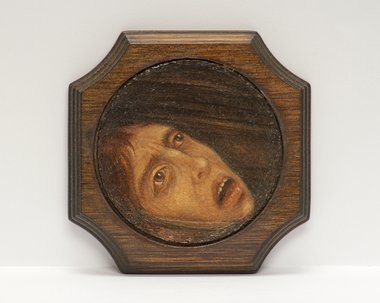
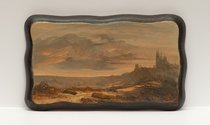
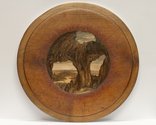
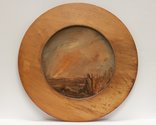
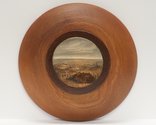
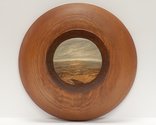
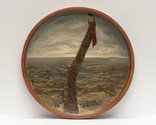
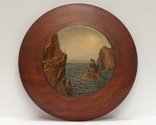
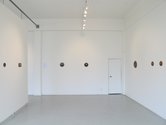
 Two Rooms presents a program of residencies and projects
Two Rooms presents a program of residencies and projects Advertising in this column
Advertising in this column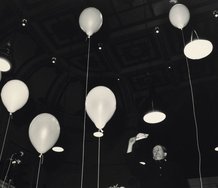
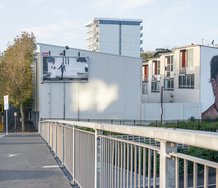
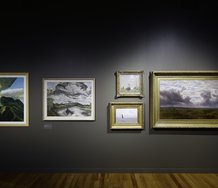

This Discussion has 0 comments.
Comment
Participate
Register to Participate.
Sign in
Sign in to an existing account.